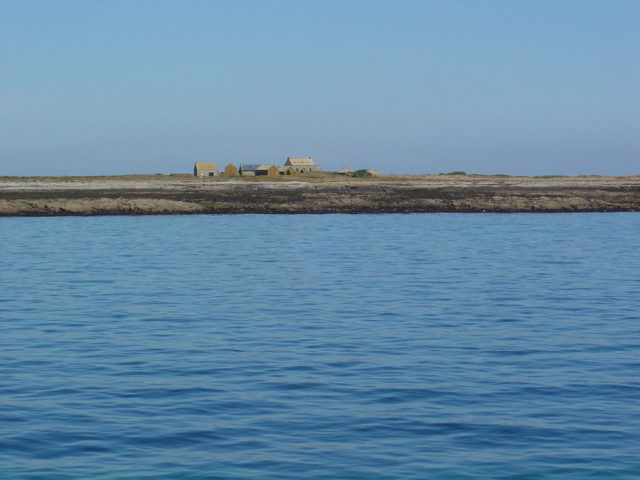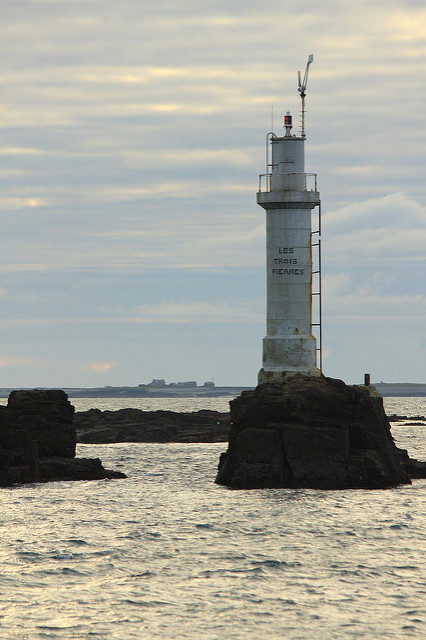A couple chosen as caretakers of a remote place–it may make you think of The Shining. We all know that didn’t end well! But the available property in question might also be an island.
In 2007 a couple agreed to be the caretakers of the island of Quéménès, a mile long and running east to west in the Molène archipelago in Finistère off the coast of Brittany. After 10 years, the family wants off the island and replacements are needed.
The governmental owners say that the job comes with a small farmhouse and the tenants would be required to earn their keep by gathering seaweed, growing vegetables, and tending a flock of black Usant sheep, chickens, horses, and two small black pigs named Monsieurs Gaston and Fernand.
The island is a nesting place for Terns, gulls, and Great Ringed Plovers as well as other seabirds. Most of them have been given names by the outgoing tenants. One of them, La Merlette, has lived on the island and raised chicks for several years; she likes to invite herself into the house and clean up crumbs on the floor.
Electricity is generated by solar panels and a wind turbine. There is a well to provide water, and the toilets are dry compost types. The well and a cistern fill with rain and supply water for drinking and bathing.

The selected tenants are expected to grow acres of potatoes to sell and other foodstuffs in order to be as self-sufficient as possible. The most important task is gathering seaweed and algae from the beach to dry for several weeks and sell in Brittany.
Far from being isolated, the island has Internet and phone access. It is open to the public for guided walking tours year round. The farmhouse has three extra bedrooms with a separate kitchen and bathroom that is used six months out of the year as a bed and breakfast.

The island has been inhabited by humans since prehistoric times, as is evidenced by the excavation of megalithic chambers, furnaces, and pieces of pottery.
In 1953, Henri Tassin leased the land to expand the seaweed harvest. He moved his family to the island and grew potatoes, cereals, and beets in the summer and collected seaweed in the winter, using over 20 ovens he brought to the island in order to dry it for sale.
After the Tassins and the few remaining stragglers left the island about 25 years ago, the Conservatoire du Littoral, France’s Coastal Protection Agency, acquired the land. Rather than turn Quéménès into a nature preserve, as was expected, they decided to keep the island as it was and have tenants as caretakers.
In 2007, David and Soizic Cuisnier were chosen as custodians and set out on a 10-year adventure. Their original goal was to start a business converting seaweed into pickles, but the need to conserve water made that goal unreachable.
During their decade of work, the couple dealt with storms that blew for weeks at a time, high numbers of rabbits eating their crops (until the majority of them died from a viral infection transmitted by insects), skeletons of long-dead victims of shipwrecks in the archipelago washing up on the beach–and the births of their two children, Jules and Chloé.

The family has decided it is time to return to civilization. The children need to go to school and socialize with other children and the Cuisniers, who have become experts on gathering and drying seaweed, still want to start a seaweed harvesting company where water is much more abundant.
Read another story from us: Robben Island: the oval island of Cape Town
The island has a website with photos and prices for the bed and breakfast as well as a mail order boutique where the delicious potatoes, seaweed tartar, dried sea beans, dry algae mixtures and Pioka dry seaweed are sold.
